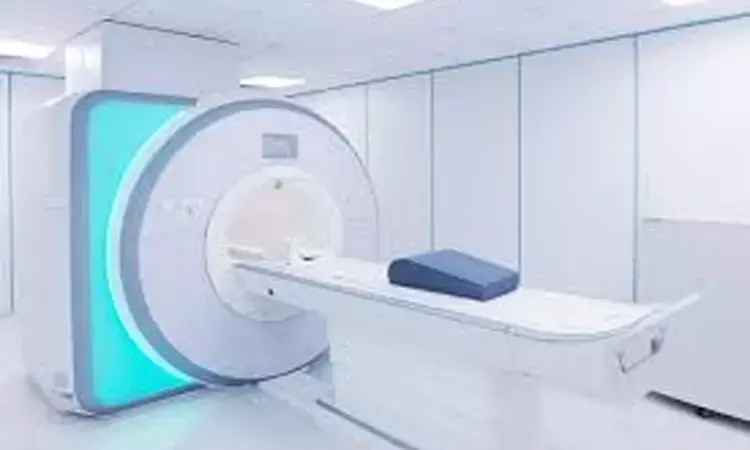- Home
- Medical news & Guidelines
- Anesthesiology
- Cardiology and CTVS
- Critical Care
- Dentistry
- Dermatology
- Diabetes and Endocrinology
- ENT
- Gastroenterology
- Medicine
- Nephrology
- Neurology
- Obstretics-Gynaecology
- Oncology
- Ophthalmology
- Orthopaedics
- Pediatrics-Neonatology
- Psychiatry
- Pulmonology
- Radiology
- Surgery
- Urology
- Laboratory Medicine
- Diet
- Nursing
- Paramedical
- Physiotherapy
- Health news
- Fact Check
- Bone Health Fact Check
- Brain Health Fact Check
- Cancer Related Fact Check
- Child Care Fact Check
- Dental and oral health fact check
- Diabetes and metabolic health fact check
- Diet and Nutrition Fact Check
- Eye and ENT Care Fact Check
- Fitness fact check
- Gut health fact check
- Heart health fact check
- Kidney health fact check
- Medical education fact check
- Men's health fact check
- Respiratory fact check
- Skin and hair care fact check
- Vaccine and Immunization fact check
- Women's health fact check
- AYUSH
- State News
- Andaman and Nicobar Islands
- Andhra Pradesh
- Arunachal Pradesh
- Assam
- Bihar
- Chandigarh
- Chattisgarh
- Dadra and Nagar Haveli
- Daman and Diu
- Delhi
- Goa
- Gujarat
- Haryana
- Himachal Pradesh
- Jammu & Kashmir
- Jharkhand
- Karnataka
- Kerala
- Ladakh
- Lakshadweep
- Madhya Pradesh
- Maharashtra
- Manipur
- Meghalaya
- Mizoram
- Nagaland
- Odisha
- Puducherry
- Punjab
- Rajasthan
- Sikkim
- Tamil Nadu
- Telangana
- Tripura
- Uttar Pradesh
- Uttrakhand
- West Bengal
- Medical Education
- Industry
Use of gadolinium-based contrast agents and MRI protocols: SFNR Guidelines

France: The French Society of Neuroradiology (SFNR) has released recent guideline on the use of gadolinium-based contrast agents and related MRI protocols in neuroradiology.
Gadolinium-based contrast agents (GBCAs) are used in up to 35% of magnetic resonance imaging (MRI) examinations and are associated with an excellent safety profile. Nevertheless, two main issues have arisen in the last two decades: the risk of nephrogenic systemic fibrosis and the risk of gadolinium deposition and retention.
The consensus guideline, published in the Journal of Neuroradiology, reviews the different categories of GBCAs available in neuroradiology, their issues, and provides updates regarding the use of these agents in routine daily practice.
Key recommendations include:
- High nephrogenic systemic fibrosis (NSF) risk GBCAs are strictly not to be used in Neuroradiology.
- Intermediate NSF risk GBCAs are strictly not to be used in Neuroradiology.
- Low NSF risk GBCAs, namely Gadoterate meglumine, Gadobutrol, and Gadoteridol should be used for neuroimaging.
- Standard GBCA dose for neuroimaging is 0.1 mmol/kg body weight (BW).
- EGFR assessment is not mandatory before GBCA injection.
- In patients with no residual renal function (anuric), enhanced computed tomography (CT) is preferred to enhanced MRI if diagnostic performances are similar.
- When repeat GBCA injections are mandated by an acute clinical context, a minimum of 4 hours between injections is recommended, extended to 7 days in patients with an eGFR < 30 ml/min/1.73m2, and to the newborn and infant under 1 year of age.
- In pregnant women, GBCAs injection should be used only when deemed clinically necessary and non-postponable to after the pregnancy.
- In lactating women, GBCA injection should be used only when deemed clinically necessary and non-postponable to after the lactation period.
- In the context of acute ischemic stroke, GBCA use is not systematic and should be reserved for penumbral imaging using perfusion-weighted sequences, and for the pre-therapeutic evaluation of revascularization strategies on a case-by-case approach.
- Non-contrast MR-Time of Flight Angiography should be favored for the evaluation of intracranial arterial occlusion.
- Supra-aortic trunk MR-Angiography with GBCA injection can be performed as part as the initial MR exam in patients with a suspectedtransient ischemic attack.
- GBCA injection and intracranial vascular imaging are systematic in the work-up of a patient with ICH to search for an underlying etiology, except when the patient strictly meets criteria for hypertensive microangiopathy (deep hemorrhage, > 65 y.o., hypertension, and other hypertension end-organ stigmata).
Source : Journal of Neuroradiology
Dr Kamal Kant Kohli-MBBS, DTCD- a chest specialist with more than 30 years of practice and a flair for writing clinical articles, Dr Kamal Kant Kohli joined Medical Dialogues as a Chief Editor of Medical News. Besides writing articles, as an editor, he proofreads and verifies all the medical content published on Medical Dialogues including those coming from journals, studies,medical conferences,guidelines etc. Email: drkohli@medicaldialogues.in. Contact no. 011-43720751


